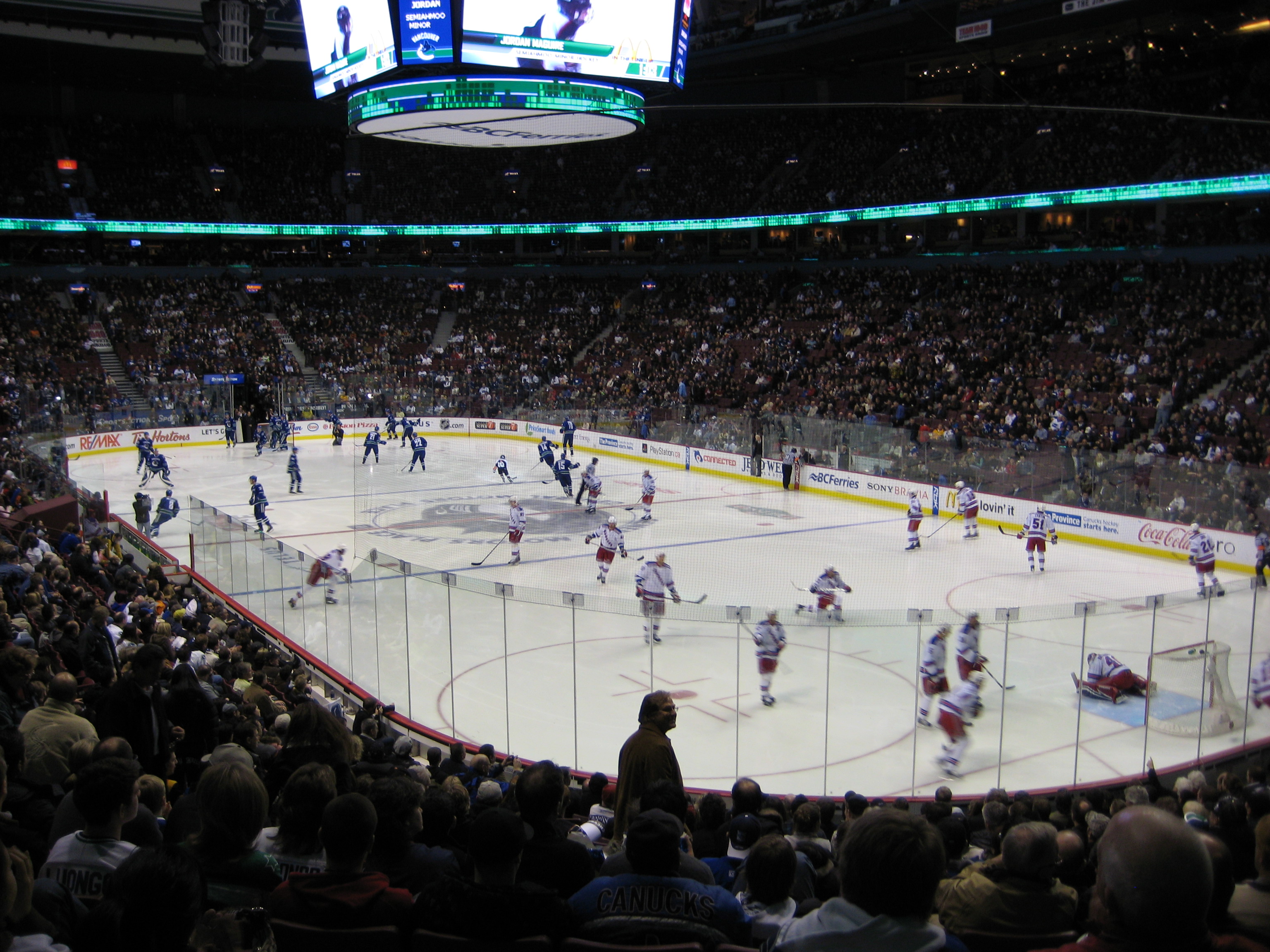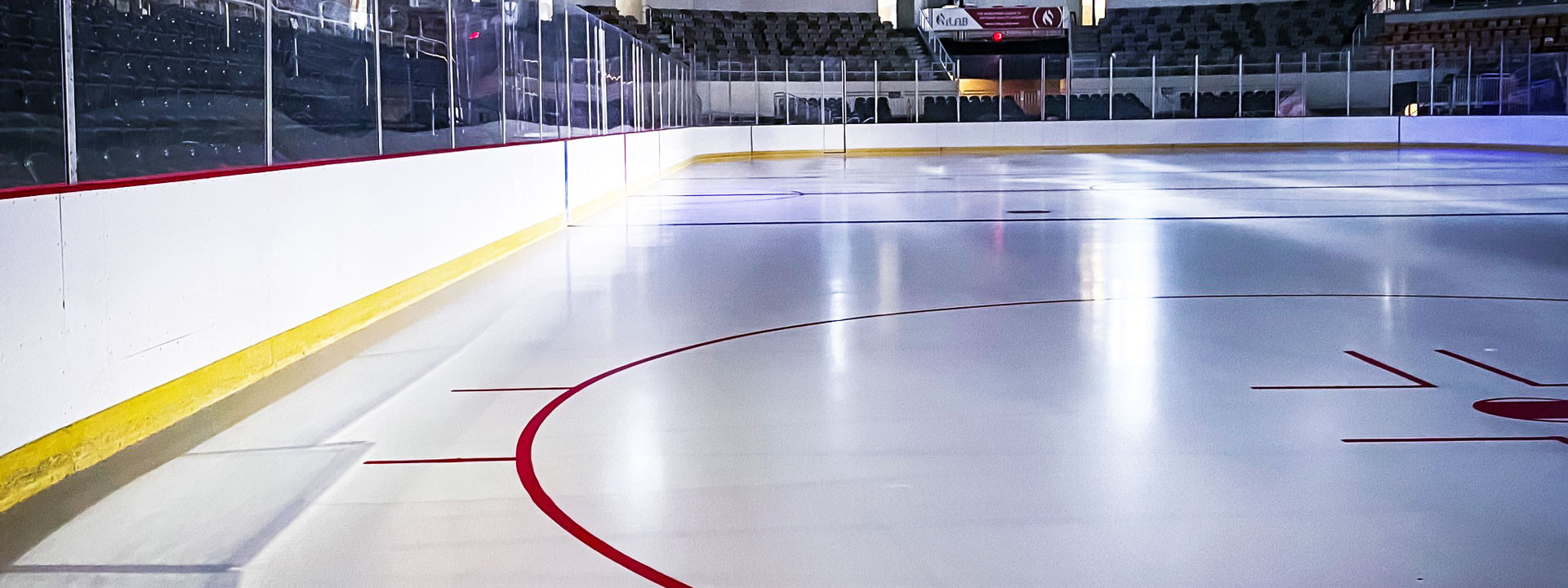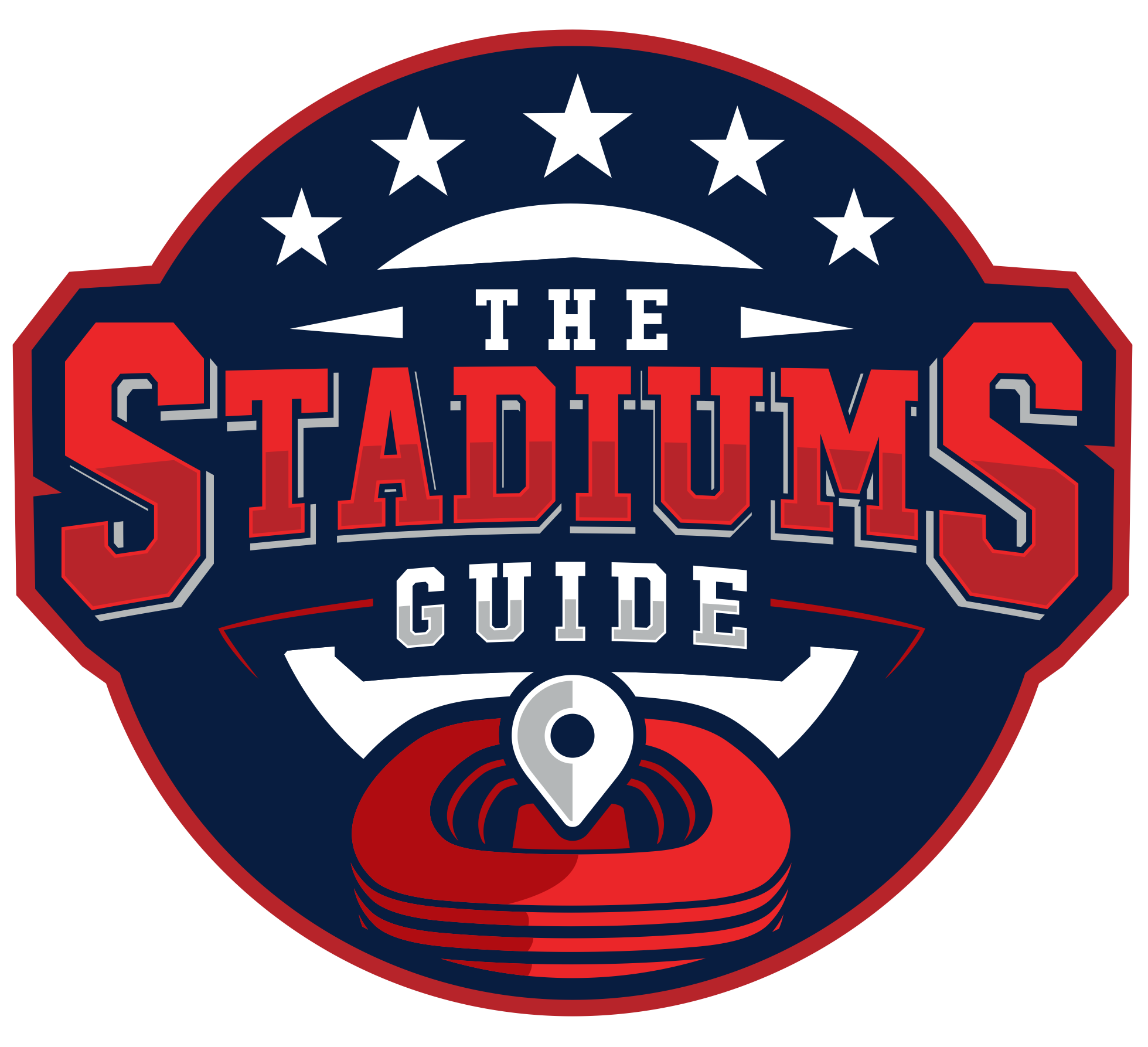Ice hockey is a fast-paced and thrilling sport played on a specific type of surface, called an ice hockey rink.
The size of this rink can affect various aspects of the game, such as the speed and style of play. As such, understanding the dimensions of an ice hockey rink is essential for both players and fans alike.
When discussing the size of an ice hockey rink, there are primarily two different measurements to consider: those used in North America, particularly for the National Hockey League, and those used internationally by the International Ice Hockey Federation (IIHF).
The NHL rink size is approximately 85 feet by 200 feet, with a corner radius of 28 feet. On the other hand, IIHF specifications measure the rink at about 196.9 feet by 98.4 feet, with a corner radius of 27.9 feet.
These differences not only affect the overall area of the rink but can also influence the gameplay.
Standard Ice Hockey Rink Dimensions
Ice hockey rinks may slightly vary in size between different leagues and countries; however, they generally follow the dimensions set by major organizations, such as the NHL and the International Ice Hockey Federation.
National Hockey League
The standard size of a North American ice hockey rink in the NHL measures 200 feet long by 85 feet wide (approximately 61 meters by 26 meters).
While every NHL rink conforms to these dimensions, it is important to note that specific elements, such as boards or lighting systems, may vary slightly, impacting the playing conditions between different arenas.
The corners of an NHL rink have a radius of 28 feet.
International Ice Hockey Federation
Ice hockey rinks worldwide under the jurisdiction of the IIHF typically have different dimensions than those used in the NHL.
These rinks measure 60.0 meters by 30.0 meters (196.9 ft x 98.4 ft), with a corner radius of 8.5 meters (27.9 ft). The two goal lines are 4.0 meters (13.1 ft) from the end boards, and the blue lines are 22.86 meters (75.0 ft) from the end boards.

Rink Markings and Zones
Face-Off Circles and Spots
Ice hockey rinks have several markings that indicate specific zones and spots on the ice, which are crucial for gameplay.
One of these markings is the face-off circles and spots.
There are a total of nine face-off spots on an ice hockey rink, including one at the center and four in each end zone.
The face-off circles surround these spots and are where players line up during a face-off to gain possession of the puck. Each face-off circle has a diameter of 30 feet (9.1 m).
Goal Crease
The goal crease is an area in front of the goaltender’s net, marked by a semi-circular red line with a radius of 6 feet (1.8 m).
This area is designed to protect the goaltender from interference by opposing players. Attacking players cannot enter the goal crease unless the puck is already inside the crease, and goals scored while an attacking player is inside the crease can be disallowed if it is determined that the player interfered with the goaltender’s ability to make a save.
Blue Lines and Red Line
The blue lines and red line are additional markings on the ice that help to define the different zones. The red line, also known as the center line, divides the rink in half and is used for determining offside and icing calls. The blue lines are 75 feet (22.9 m) from the end boards and 50 feet (15.2 m) apart according to NHL standards.
They separate the rink into three zones: the attacking zone, the neutral zone, and the defending zone. Players must ensure they are onside when crossing the blue line into the attacking zone, which means the puck must cross the blue line first before any attacking players do.
Neutral Zone
The neutral zone is the area between the two blue lines. It is a crucial area of the ice, where teams battle for possession of the puck and try to create offensive opportunities. Due to its location, the neutral zone is often a hotbed of fast-paced, back-and-forth action, as both teams work to gain control and advance the puck into their opponent’s zone.

Rink Construction
Constructing an ice hockey rink involves several steps and components to ensure that players have a safe and smooth surface for competitive games.
Rink Boards and Glass
The rink boards form the perimeter of the ice hockey rink, containing the playing area and providing spectators with a clear view of the action. Rink boards are typically made from heavy-duty plastic or other durable materials, with protective padding on the top edge to reduce player injuries. The boards’ height usually ranges from 40 to 48 inches (101.6 to 121.9 cm).
Surrounding the rink boards is a glass system, which acts as a barrier between the players and spectators. This protective glass is made of tempered or laminated safety glass designed to withstand impacts from pucks and players. Glass installed behind the goal lines is typically taller to provide additional protection for spectators from high-flying pucks.
Ice Surface Preparation and Maintenance
The ice surface is a crucial component of an ice hockey rink. According to NHL specifications, North American rinks measure 200 by 85 feet (60.96 m × 25.9 m) with a corner radius of 28 feet (8.5 m).
Preparing the ice involves several layers of water being sprayed and frozen to create a solid base. Thin coats of water, usually around 1/16″ to 1/18″ thick, are applied in consecutive layers until the desired thickness is achieved – typically around 1″ to 1.5″ in total.
An ice resurfacer, commonly known as a Zamboni, is used for maintaining the ice surface throughout the hockey season.
The machine shaves off the top layer of rough ice and simultaneously lays down a thin layer of heated water, which quickly cools and forms a new, smooth layer of ice.
This process is essential in maintaining optimal playing conditions and ensuring player safety during games.
Proper lighting and temperature control are also critical factors in maintaining the ice surface. The temperature must be constantly monitored and adjusted to keep the ice in optimal condition for gameplay. Too warm, and the ice will become soft and slow; too cold, and the surface will be too hard and potentially cause injuries. Well-lit ice surfaces are critical for both players and spectators, as clear visibility is essential for safe and enjoyable gameplay.

Variations in Rink Sizes
North American vs. Olympic-sized Rinks
Ice hockey rinks can vary in size depending on the location and level of play. In North America, the standard rink size follows the National Hockey League (NHL) specifications, which measure 200 feet by 85 feet (60.96 m × 25.9 m) with a corner radius of 28 feet (8.5 m).
On the other hand, Olympic-sized rinks are slightly larger, measuring nearly 200 feet long and 97-100 feet wide (60 meters x 30 meters). The primary difference between the two rink sizes is the width, which impacts the gameplay and strategies employed by teams.
NHL rinks have blue lines that are 75 feet (22.9 m) from the end boards and 50 feet (15.2 m) apart, while the goal lines are 11 feet (3.4 m) from the end boards.
The larger ice surface in Olympic-sized rinks provides more space for players to maneuver, which leads to a greater emphasis on skating and passing skills as opposed to the more physical style of play seen in the NHL.
Non-Standard Recreational Rinks
Besides the standard NHL and Olympic-sized rinks, there are smaller, non-standard ice rinks used for recreational skating. These rinks are often found in public parks during winter months and tend to vary in size.
Recreational rinks are typically not used for competitive hockey games, but serve as a more accessible option for casual skaters and those looking to practice or enjoy the ice.
Regulation-sized ice rinks for competitive figure skating, for example, measure 200 feet by 100 feet, which is larger than NHL rinks but similar to Olympic-sized rinks in width.
Understanding the variations in rink sizes is essential for both players and spectators, as it can influence the dynamics and excitement of the game.
James is a big time NBA Golden State follower, who makes sure to catch games when he's in the area. He likes to follow International Soccer, with an interest in small town soccer club, Blackburn Rovers located in the North on the UK.

